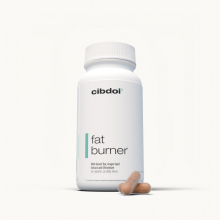BMI Calculator: Calculate your ideal weight
Published:

BMI is an imprecise, but widely accepted, global metric. This calculator provides a quick and easy method to estimate if your body weight is healthy based on your height and weight measured in the metric system.
Contents:
-
Calculating your BMI can help you identify potential health risks and guide you toward healthy lifestyle changes if your results are outside the recommended range.
-
Online BMI calculators take the guesswork out of calculating your BMI and ideal weight range in just a few minutes. To get any meaningful results, you need to be using the right measurements.
-
As a general population level health screening tool, BMI can be a helpful indicator. It has serious limitations and does not adequately capture health for individuals with high muscle mass, atypical body shapes, and ethnic minorities.
-
So whatever your BMI, stay healthy out there! You want to go beyond BMI to measure body composition, nutrition, physical activity and wellness to get the full picture of health.
-
For the most effective outcomes, use BMI screenings in conjunction with regular self-monitoring, guided health strategies tailored for individuals, and professional healthcare guidance.
A BMI calculator is a tool that helps people estimate their ideal weight by comparing their height and weight using the Body Mass Index formula. It gives a simple number that shows if someone falls within a healthy weight range. Many health experts use BMI to guide choices about diet, exercise, and overall wellness.
While BMI does not measure body fat directly, it gives a fast way to spot risks linked to weight. People use the calculator to track changes and set clear health goals. To get the most out of a BMI result, it helps to know how the number fits with age, sex, and lifestyle.
The main part explains how to use a BMI calculator and what results mean.
What is BMI?
Body mass index (BMI) is a simple, often flawed, one-size-fits-all measure of a person’s weight in relation to their height. It gives a single number, expressed in kg/m² (or lb/in² in some contexts), that helps sort people into general weight categories: underweight, healthy weight, overweight, or obese.
Health organizations such as the World Health Organization (WHO) and the Centers for Disease Control and Prevention (CDC) use BMI as a key metric. It works really well for adult men and women in almost all populations. To be clear, BMI is not a measure of body fat. Rather, it acts as a crude proxy to determine a healthy weight range and calculate potential health dangers.
BMI Defined
BMI takes your weight and height and combines them into one single score. This number tells you if you fall into a certain group: below 18.5 is underweight, 18.5 to 24.9 is healthy, 25.0 to 29.9 is overweight, and 30.0 or more is obesity.
The biggest advantage of BMI is that it is quick. It’s a simple measurement. You just need two numbers—weight and height. Plug them into a BMI calculator, and you get an answer in seconds. This is what makes it so useful for screening and health check-ups.
It’s not without its flaws. Because BMI cannot distinguish between muscle and fat. A competitive bodybuilder could fall into the overweight category with a high BMI but very low body fat percentage. After all, two people with the same BMI can have very different body shapes and health profiles.
Even so, BMI is a quick and useful tool to zoom out and get a broad overview of health. Doctors and health experts, especially, use it as a tool to begin conversations about a person’s weight and overall risk.
Basic Formula
-
Use the formula and plug in weight in kilograms and height in meters. Take the weight in pounds and divide it by the height in inches squared. For example, 70 kg and 1.75 m: 70 / (1.75 × 1.75) = 22.9. The unfortunate truth is that this is a perfectly healthy BMI.
-
If you are using pounds and inches, convert the weight in pounds to kilograms by dividing by 2.205. For pound, multiply by 0.45359237 to get kilogram.
-
For example: 90 kg and 1.6 m: 90 / (1.6 × 1.6) = 35.2 (obesity). Or, 60 kg and 1.8 m: 60 / (1.8 × 1.8) = 18.5 (borderline underweight).
-
Getting the numbers right matters. A minor error in height or weight dramatically alters the outcome. Measure height and weight carefully to ensure a precise BMI calculation.
Its Purpose
BMI plays a key role in identifying health risks associated with being underweight or overweight. Being above or below the healthy range can put you at greater risk for developing heart disease, diabetes, or other serious health issues.
BMI shouldn’t be used only as a personal check. It’s widely used in research to identify trends across entire populations. It is a useful tool that allows governments and health organizations to understand if a population’s weight is increasing or decreasing, and to better organize public health initiatives.
It’s important to remember that BMI is intended as a general guide—not a definitive rule. It paves the way for more invasive examinations such as body composition scans, waist circumference measurements, or blood tests.
Learning your BMI is a great first step for keeping tabs on your health. That’s just one piece of the entire picture.
Calculate Your Ideal Weight
Ideal weight is more of a range than a hard target. It varies by stature, by age, by body composition, and yes, by where you live. BMI is one of the most popular methods of measuring your ideal weight. It pulls directly from your height and weight inputs to guess ranges of what is considered healthy.
BMI calculators allow you to do these checks quickly and easily, but remember, they only give you half the picture. To get a more individualized perspective, an ideal weight calculator is a great place to start.
-
Using the calculator will help you arrive at an appropriate number based on your height and current weight.
-
Track changes over time for better health insights.
-
Compare personal results with global standards.
-
Explore different methods for more tailored results.
-
Use results to start positive lifestyle changes.
1. Using Calculators
Just enter in your weight and height into the calculator. Almost all tools will let you select metric units, like kilograms and centimeters, or imperial units, like pounds and inches. That flexibility opens things up for everyone, everywhere!
These online calculators, often available on state and national health department websites, offer immediate results. Save Your Results You can save your results to monitor progress or share with your health care professional.
When you leverage Cibdol’s trusted tools, you receive fast, uncomplicated results tailored to your unique wellness journey.
2. Adult Charts
Adult Charts Standard BMI charts are for adults aged 20 years and above. They’re widely used in North America and Europe, so results are most useful if you live in these regions. Check your BMI against categories: under 18.5 is underweight, 18.5–24.9 is healthy, 25–29.9 is overweight, and 30 or more is obese.
Understanding your BMI range is an important step in identifying risks associated with being overweight or underweight. Look for a quick categorization picture.
Compare your number to these three categories list to get a quick read on where you lie.
3. Child/Teen Charts
BMI-for-age is the best method for children and teens, as recommended by the CDC. Growth charts are different for boys and girls, since body composition changes with age and sex.
Monitoring BMI in children is key to identifying shifts sooner rather than later. These new charts will help parents set expectations for healthy habits and have conversations with their healthcare provider about their growth and development.
4. Alternative Formulas
Certain populations require alternative BMI formulas. Body type, ethnicity, and muscle mass, among other factors, can skew results. We know that Asian adults have increased health risks at lower BMIs.
Non-Hispanic Black women may benefit from more favorable fat distribution, even with elevated BMIs. Look into alternatives such as waist-to-height or waist-to-hip ratio formulas.
These provide additional information on fat distribution and associated health risks.
5. Interpreting Results
Read your BMI result carefully. What each range indicates about health risk Each range is associated with a different level of health risk. BMI does not reflect body fat, muscle, or the distribution of body fat.
Don’t make BMI the sole test of your health. Discuss with an appropriate medical professional to consider your overall health profile.
BMI Limitations
BMI is a simple way to estimate body fat using height and weight. It has important shortcomings when used as the single measure of health.
-
Does not show fat distribution or muscle mass
-
Misses waist, hip, or body shape details
-
Can misclassify healthy, muscular people as overweight or obese
-
Doesn’t account for tall people, short people, or unusual body types
-
Fails to account for age, sex, or ethnic differences
-
Not valid for older adults because the process of aging itself alters the distribution of muscle and fat
-
Overlooks increased health risks associated with fat distribution on the body
-
Best used alongside other tools, not alone
Muscle Mass
BMI is not able to distinguish between the presence of muscle versus fat. An athlete or competitive weightlifter with substantial muscle mass could be classified “overweight” or “obese” according to BMI. This is the case, even if they possess low body fat and are otherwise highly fit and healthy.
This misclassification happens all the time. A BMI of 27 for a sprinter or bodybuilder could mean they have lower fat than someone with a BMI of 23. That same person could have less fat and more muscle.
Body composition is what truly matters for health. For example, fat stored around the waist, rather than body weight overall, is a greater indicator of risk to the heart. Cibdol urges all muscular individuals to see beyond BMI.
Better alternatives are body fat percentage, waist-to-height ratio (WtHR), and waist-to-hip ratio (WHR)! Personalized body composition checks provide the most accurate and informative picture, especially for athletes and very active adults.
Age Influence
Age ‒ BMI increases meaning with age. With advancing age, muscle mass decreases and fat mass may increase despite stable weight. That means a “healthy” BMI might not alert anyone to undetectable fat accumulation or muscle deterioration in the elderly.
It is important to recalibrate health screening to account for age. Cibdol proposes that seniors should have regular check-ups. They need to track other indicators as well, such as waist circumference or body composition, to detect changes early.
Age is an important factor to consider for healthy weight. Maintaining a healthy BMI and body composition is important in reducing health risks as we get older.
Gender Nuances
Hormonal differences between men and women alter the distribution of fat and muscle tissue across the body. For instance, men are more likely to store fat in the abdomen area, while women store fat in the pelvic area, specifically hips and thighs.
That means BMI might not be capturing the entire picture for all people. Cibdol urges people to seek health advice that fits their sex and unique makeup.
Ethnic Factors
BMI’s lack of suitability for all groups is evident when considering ethnic factors. One notable example is that some ethnic groups may be at greater health risk at lower BMI scores.
Creating BMI charts for each ethnic group improves the effectiveness. Understanding how your body composition and risk factors vary from these typical charts is key.
Body Composition
There are important health indicators that BMI alone fails to capture. The location of body fat—such as abdominal vs. Gluteal storage—is important to health as well.
Two people with the same BMI may be at very different risks if one carries more weight around the belly. Cibdol advises against judging fitness by weight alone, and instead measuring body fat percentage and fat storage.
These actions provide a more complete, nuanced, and truthful picture of health.
Health Implications
Like other BMI-related applications, BMI is an imperfect tool used to screen for weight health. It serves to identify dangers associated with being too heavy or too light, but it is unable to detect information such as muscle, fat, and age. Paying attention to your BMI is a start.
Equally important is understanding what it really means for your health.
Overweight Risks
We all know that carrying excess weight takes a toll on your heart, joints, and other organs. An individual with a BMI of 30 or higher is considered obese. This puts you at greater risk for insulin resistance, type 2 diabetes, high blood pressure, and heart disease.
Having too much fat around your waist is particularly dangerous, increasing the risk of stroke and certain cancers. The direct link between high BMI and chronic illness is well-established.
Studies document that individuals with obesity are at a greater risk for developing breast, colon, and kidney cancers. This is true for all ethnicities, though individuals of Asian descent are at increased risk at lower BMI levels.
Obesity is decidedly not an individual problem, but rather a public health crisis. For these reasons, rates continue to increase globally, overwhelming health systems.
Early prevention, education, and support are crucial. Improvement is indeed achievable. Cibdol promotes the importance of healthy meals, regular movement and stress management.
Even modest modifications to everyday behaviors will make a difference by reducing health hazards.
Underweight Risks
Consequences of being underweight Low BMI (under 18.5) is bad news for your health. Being underweight isn’t necessarily a good thing—it may be an indication of malnutrition, with deficiencies of important vitamins and minerals.
Perhaps the most pressing worry is the impact of being underweight on the immune system. This spells more infections and slower healing.
Women are different, in that they naturally have more body fat. They experience specific risks associated with being underweight including bone loss and hormone imbalances.
In older adults, the risk exists because with aging, body fat decreases. If you’re experiencing fatigue, low immune system function, or difficulty concentrating, consult a medical professional.
A healthy nutritional diet along with personal training assistance will have them back strong again.
Healthy Weight Checklist
-
Know your BMI, but don’t ignore muscle versus fat.
-
Eat a mix of whole foods: grains, fruits, veggies, and lean protein.
-
Move your body daily, including strength and cardio activities.
-
Watch for changes in energy, mood, and focus.
-
Visit a health care provider for guidance if you’re concerned about your weight.
-
Stay informed—Cibdol supports smart, natural choices for better health.
Beyond Numbers: Holistic Weight
A holistic approach to weight considers the full context, beyond the BMI. True health encompasses waist circumference, body composition, habits of daily living, and emotional wellbeing. Most health risks are associated with the location of body fat or muscle metabolism.
It’s more than the number on the scale!
Lifestyle Impact
It’s everyday routines that really make an impact on our health. Everyday decisions—such as walking to the office, preparing a meal from scratch, or being more active during the day—affect our body’s energy balance.
Regular meals, healthy food and a consistent level of movement all help. Filling your plate with colorful fruits, leafy vegetables, and whole grains makes it easier to achieve a healthy weight.
Those little changes, the simple ones like taking the stairs or stretching after work—all those things, they just accumulate. Managing sleep and stress is the foundation of all of these healthy habit building blocks.
Mindful breathing or a moment of gratitude at night goes a long way for sustainable success.
Diet's Role
Diet’s role Nutrition is a major contributor to a healthy weight. Filling your plate with colorful, seasonal produce, whole grains, lean proteins and healthy fats helps nourish your metabolism and promote energy.
Avoiding highly processed snacks and added sugars beverages not only aids in weight management, but promotes heart health. Some people with higher BMI are healthy, while those with “normal” BMI may have hidden risks, like high blood sugar or cholesterol.
Waist-to-height ratio and waist size usually provide additional, often more relevant information about the risk of developing disease than BMI by itself. Emphasizing all aspects of food quality and food variety is essential to achieving a healthier body composition and decreased risk for chronic disease.
Exercise Benefits
Exercise impacts beyond calorie burning. It’s a natural antidepressant—it builds muscle, lowers body fat, and improves mood. Moderate exercise—such as walking, cycling, or swimming—normalizes body composition and is essential for cardiovascular health and vitality.
If it’s something you truly love—from yoga to recreational sports to dancing—it’s a lot more enticing and sustainable. We know that pairing exercise with a healthy, clean diet provides the best results.
Measuring muscle and fat—not just the number on the scale—reveals true progress.
Wellness Support
Mindfulness helps break unhealthy habits. Restful sleep is vital for weight and mood.
Quiet time, deep breathing, and natural solutions such as Cibdol CBD oil can restore equilibrium. Trying out new wellness practices, such as regular meditation or high-quality herbal supplements, nourishes both body and mind.
Personalized Weight Perspectives
Ideal weight is not a single number. Body Mass Index (BMI) is just one tool to guide health choices. It’s a simple ratio of weight to height that helps sort people into categories such as underweight, normal, overweight, and obese.
BMI alone misses key parts of your health. Cibdol sees wellness as personal, shaped by age, sex, body fat, muscle, and more. What works for one may not fit another. Knowing yourself matters—your lifestyle, health background, and goals all shape what “ideal” means for you.
Body Fat %
Whereas many people might focus on the scale weight or BMI, body fat percentage provides a more accurate picture. Body fat % smugly replaces BMI with body fat % to get a better picture of fitness.
For instance, two individuals can have identical BMIs, but one has significantly greater muscle mass and the other has greater adipose tissue. This difference dramatically alters their health prospects. Keeping body fat in check can reveal potential threats, such as heart disease or metabolic disease, particularly if fat accumulates around the waist.
Cibdol recommends combining BMI and body fat information for healthier, more informed check-ups. Keeping an eye on your body fat percentage over time can provide early indicators if your routine is effective or requires a change in direction.
Metabolic Rate
Metabolic Rate is the engine behind how quickly your body burns food into energy. Some people burn calories fast, some people slow, and this can vary over time with age, level of activity, and genetic factors.
When you know your own metabolic rate, you can establish realistic, achievable goals. If your metabolic rate does slow down with age, that simply means you will need to consume fewer calories or expend more energy.
Cibdol believes you should tailor your diet and fitness regimen based on your unique metabolic rate, not a one-size-fits-all plan. Account for training days versus off days, and adjust energy consumption accordingly.
Health Conditions
Other health conditions alter the impact of weight on your health. Diabetes, thyroid issues, or heart disease may all move your ideal weight range. If you have a chronic illness, tracking weight is not just about looks—it can show how well your treatment works.
Consider your health history when determining weight goals. Cibdol knows the importance of tailored solutions since every individual’s risk factors and requirements are different.
Modern Research
Research has demonstrated the limitations of BMI and recent studies have further supported the use of more precise measures, such as waist-to-height ratio. Health science is always evolving, so staying informed is important.
Cibdol is committed to offering only the most effective, science-backed advice. Choose to adopt the best approaches based on fresh, compelling research.
Conclusion
It’s free, easy, and only takes a minute to use a BMI calculator. Quick, simple tool provides important information about weight and health. Numbers can only take you so far; they’re a good starting point but don’t tell the full story. Body shape, muscle, age, and activity level all matter as well. A lot of people rely on BMI to determine weight loss goals or identify health risks. Yet, one score does not work for all bodies. Believe the facts, pay attention to your body, and have conversations with health professionals to develop a plan tailored to your individual needs. View BMI as a starting point, not the end goal. To get a fuller picture of your health, explore additional calculators and resources on our website. Be inquisitive, be informed, choose what’s right for you. Use the BMI calculator, find out where you stand, and take action with easy, effective steps.
Frequently Asked Questions
What is BMI and how is it calculated?
What is BMI and how is it calculated? The calculation itself is ridiculously simple – weight (in kg) divided by height (in m) squared. This is useful for estimating whether you’re underweight, normal weight, overweight, or obese.
Can a BMI calculator tell me my ideal weight?
Your BMI calculator should give you a healthy weight range based on your height. A BMI calculator gives you an idea of where your current weight stands in relation to healthy ranges. It’s not just about the numbers — individual health factors should come into play, too.
What are the limitations of BMI?
BMI ignores factors like muscle mass, bone structure, age, or gender. It will erroneously misclassify very athletic or older people. Never let your BMI be the only thing you focus on when thinking about your health.
Why is knowing my BMI important for health?
Understanding your BMI helps you take charge of your health by understanding your risk for serious health conditions. These are heart disease, diabetes, and hypertension. It’s a great first step to take control of your health and weight.
Is BMI the only way to assess a healthy weight?
Not quite – BMI is just one tool. Other measures, such as waist circumference and body composition, matter. Holistic health takes into account your lifestyle, nutrition, and activity level as well.
How can I use my BMI results for better health?
Use your BMI results to help you determine health goals, and discuss them with a healthcare professional. Consider these changes Ingredients in some over-the-counter medicines can affect your weight.
Does everyone have the same ideal BMI?
Does everyone have the same ideal BMI? Personal factors such as age, genetic background, and level of physical activity all play a part in determining what is healthy for you. Smart practice : Always individualize health goals.














